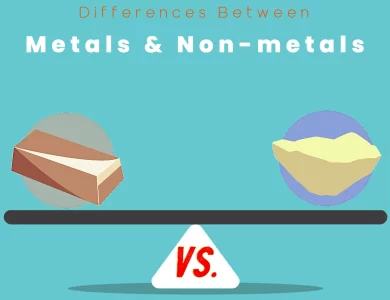Organic Chemistry
Here, we delve into the intricate details of this fascinating branch of chemistry, shedding light on the differences in terms and other essential aspects that shape the field. Whether you’re a student, researcher, or simply curious about the subject, this guide is designed to demystify the complexities of Organic Chemistry in a friendly and approachable manner.
Organic Chemistry is the study of carbon-based compounds, which form the basis of life as we know it. Understanding the nuances of this discipline can be challenging, with a vast array of terms and concepts to grasp. In this category, we bring together a wealth of content that explores the differences in terms, definitions, and other crucial elements that are integral to Organic Chemistry. So, let’s embark on this journey together and unravel the mysteries of this captivating field!
-

Difference Between Nicotine and Caffeine
Are you a coffee connoisseur or a curious vaper? Delve into the captivating world of caffeine and nicotine, two stimulants with striking differences. Caffeine, the beloved pick-me-up found in coffee beans and tea leaves, energizes our minds and bodies, enhancing alertness and focus. On the other hand, nicotine, lurking in tobacco leaves, entices with its temporary mood-boosting effects but comes with a serious price—the chains of addiction and harmful health risks. In this friendly guide, we'll explore their chemical compositions, natural sources, and impacts on heart health, sleep, and more. Let's sip on knowledge and steer clear of harmful temptations. Read on to unravel the secrets of caffeine and nicotine, empowering yourself to make informed choices for a healthier, brighter future.
-

Pamabrom vs Caffeine
In the realm of health and wellness, two substances stand out for their distinct effects and applications: caffeine and pamabrom. Caffeine, a well-known stimulant found in coffee, tea, and energy drinks, stimulates the central nervous system, promoting alertness and reduced fatigue. On the other hand, pamabrom, a diuretic drug often used for menstrual relief and edema treatment, reduces water retention and swelling. While caffeine is naturally present in coffee and tea, pamabrom is synthesized for use in medications. Understanding the differences between these compounds empowers individuals to make informed choices for their well-being. Caffeine's popularity lies in its ability to enhance cognitive function and physical performance. It's a favorite go-to for individuals seeking an energy boost and improved concentration. However, excessive consumption can lead to side effects such as insomnia, jitteriness, and increased heart rate. On the contrary, pamabrom targets water retention and bloating, providing relief during the menstrual cycle and addressing edema. It is generally well-tolerated but should be used responsibly to avoid electrolyte imbalances and dehydration. Both substances serve distinct purposes, and choosing the right one depends on your specific needs. So, whether you opt for the alertness-boosting power of caffeine or the water retention reduction of pamabrom, remember to consult healthcare professionals for safe and effective usage. Explore the dissimilarities, embrace your newfound knowledge, and make the best choices for a healthier and happier you.
-

Non-Metals vs Metals
Welcome to a captivating journey through the captivating realms of metals and non-metals. In this blog, we'll uncover the secrets behind these elemental entities and explore their unique properties, applications, and significance in our everyday lives. From the shiny brilliance of metals to the versatile characteristics of non-metals, we'll delve into their distinct attributes that shape our physical world. Metals, with their characteristic metallic luster, exceptional strength, and conductivity, find applications in construction, transportation, electronics, and jewelry. Meanwhile, non-metals, which lack the metallic luster, exhibit diverse properties and play vital roles in healthcare, energy production, agriculture, and beyond. We'll delve into their contrasting physical and chemical properties, from malleability and ductility to their reactivity and bonding characteristics. Join us on this captivating adventure as we explore the interplay between metals and non-metals, their impact on our environment, and the importance of sustainable practices. We'll unravel the mysteries behind their extraction, production, and disposal, while highlighting the efforts being made to minimize their environmental footprint. By the end of this blog, you'll gain a deeper understanding of how metals and non-metals shape our world and the steps we can take to foster a more sustainable future. So, get ready to embark on a journey through the wonders of metals and non-metals, where shimmering brilliance and versatile properties await. Let's delve into the captivating world of elements and expand our knowledge of these fundamental components that surround us.


